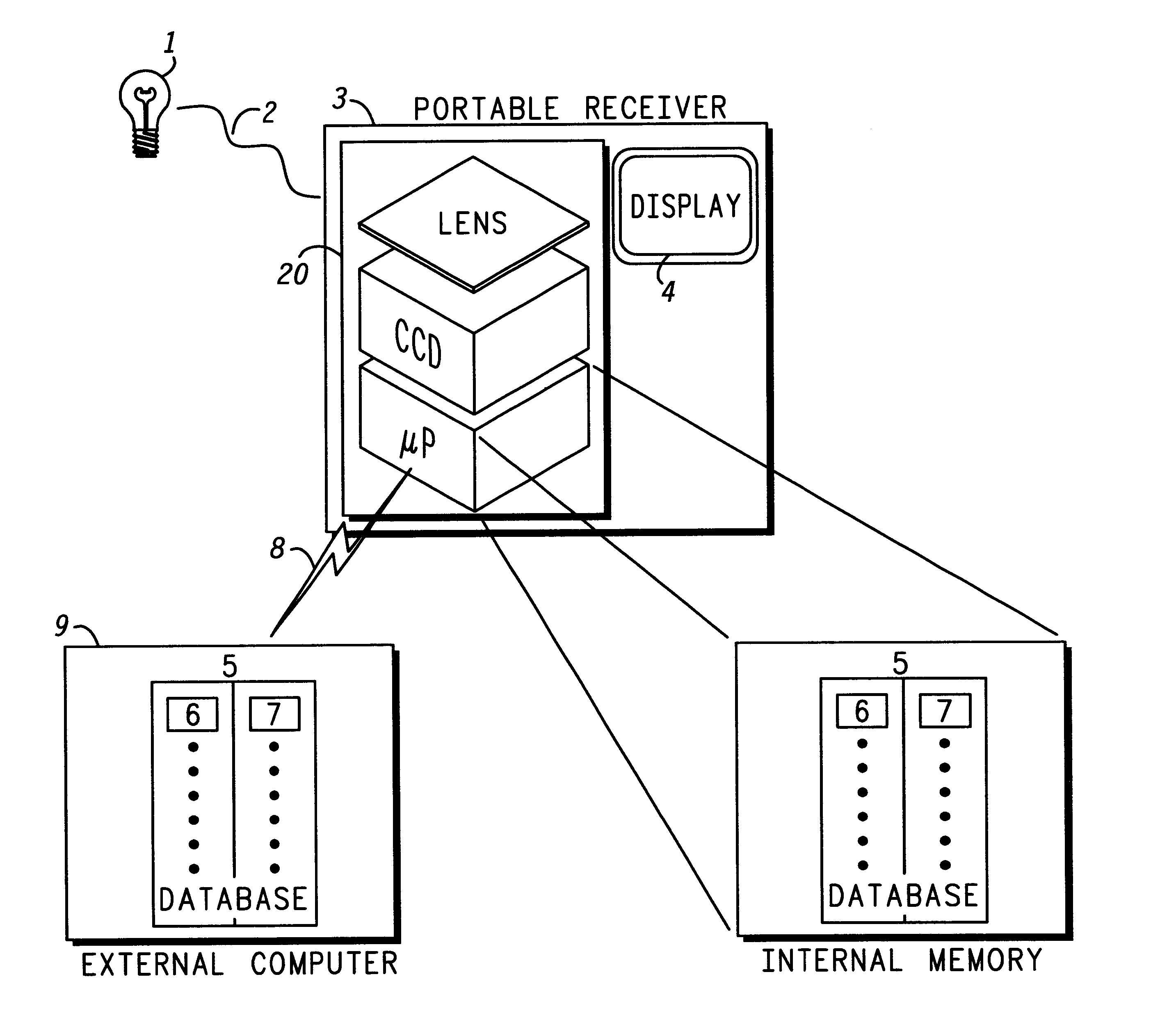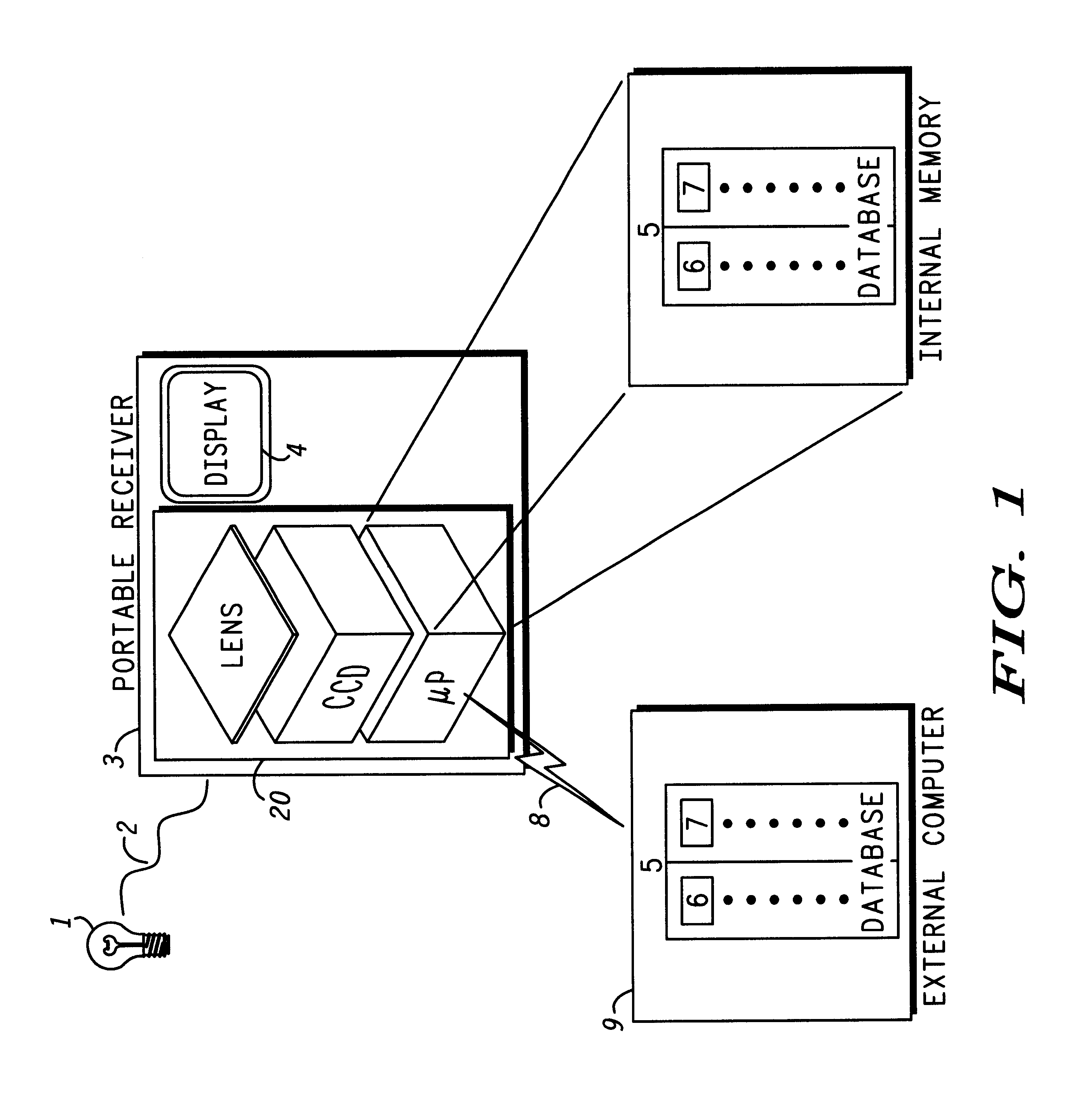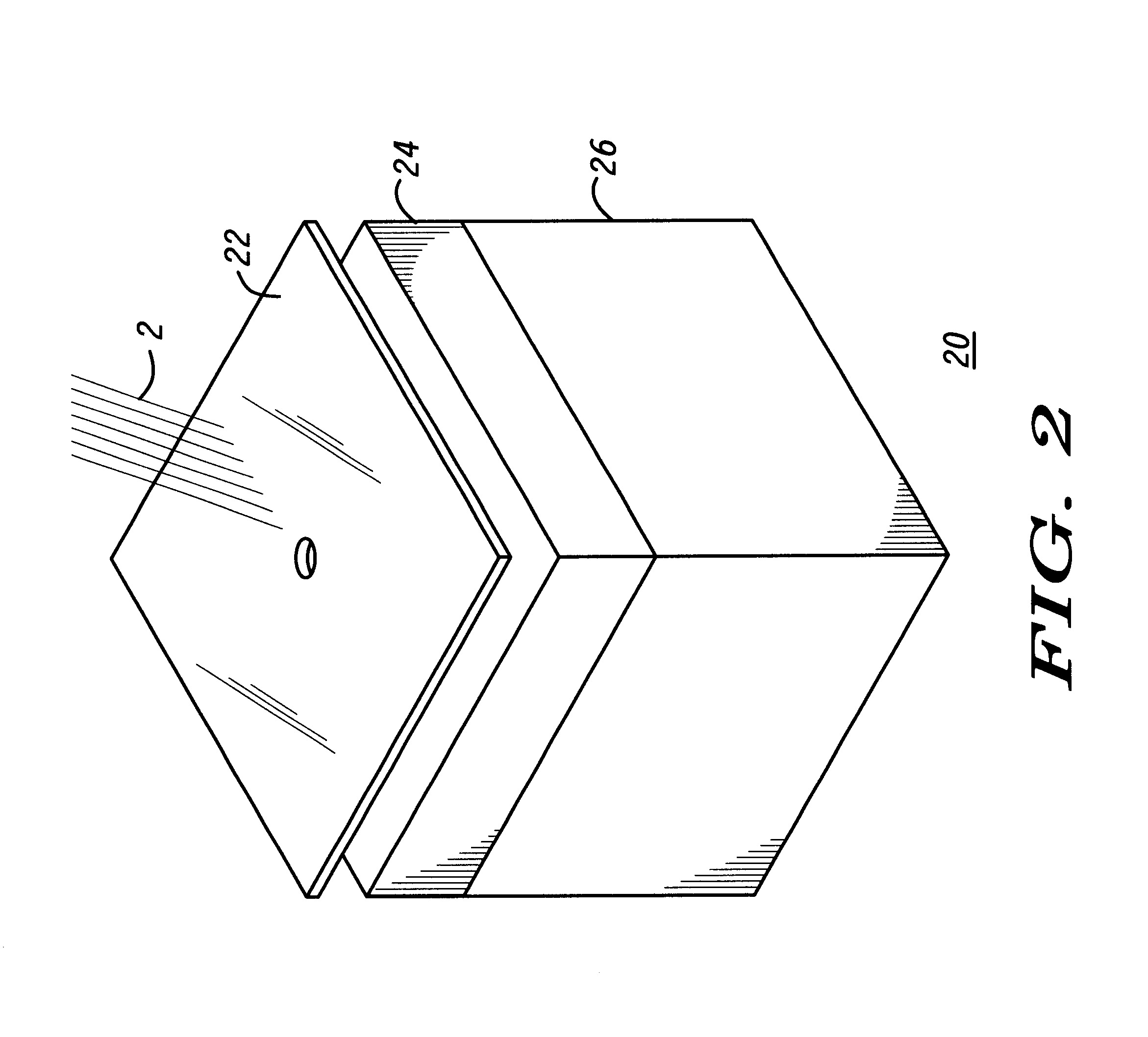Optically-based location system and method for determining a location at a structure
- Summary
- Abstract
- Description
- Claims
- Application Information
AI Technical Summary
Problems solved by technology
Method used
Image
Examples
Embodiment Construction
It is often forgotten that indoor environments were constructed to minimize audio and optical interference. Walls were erected and doors were installed to keep in-building conversations private and to substantially prevent light from dispersing from one area to another. A typical building, for example, is configured such that room A has one light source and room B has another light source. Thus, the light emitting from each respective source (e.g., the transmitted signal) cannot interfere with light emitting from another source. On the other hand, if RF sources (transmitters) are used, multiple signals originating from one area can and do interfere with each other and also with signals originating from other areas, including areas behind walls. When RF sources are used with in-building location detection systems, the interference skews a location sought to be estimated.
Instead of applying RF signals for determining location, the present invention uses optical signal technology in a ...
PUM
 Login to View More
Login to View More Abstract
Description
Claims
Application Information
 Login to View More
Login to View More - R&D
- Intellectual Property
- Life Sciences
- Materials
- Tech Scout
- Unparalleled Data Quality
- Higher Quality Content
- 60% Fewer Hallucinations
Browse by: Latest US Patents, China's latest patents, Technical Efficacy Thesaurus, Application Domain, Technology Topic, Popular Technical Reports.
© 2025 PatSnap. All rights reserved.Legal|Privacy policy|Modern Slavery Act Transparency Statement|Sitemap|About US| Contact US: help@patsnap.com



